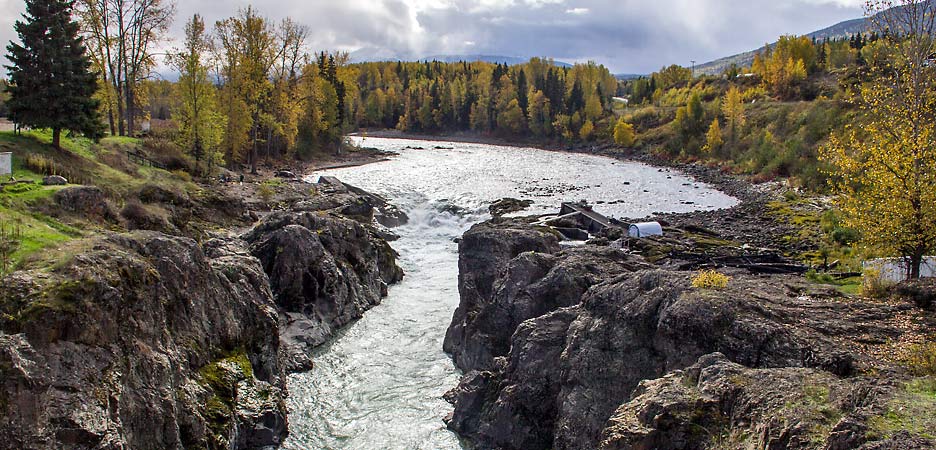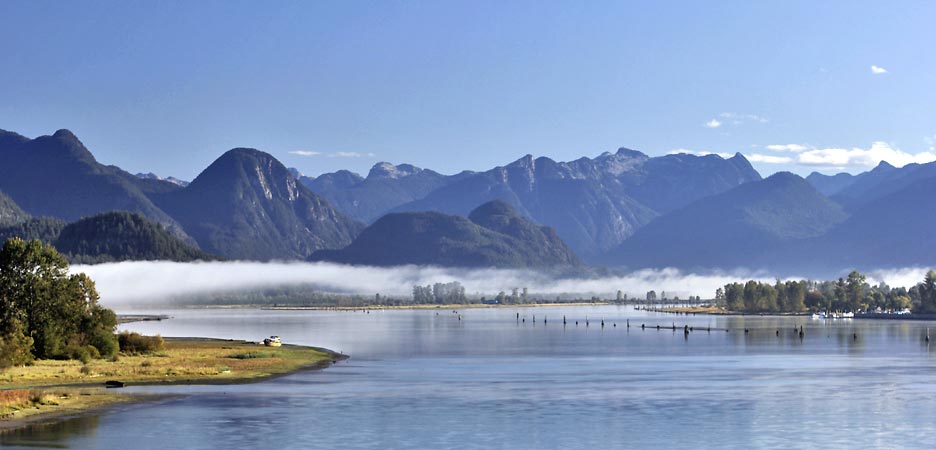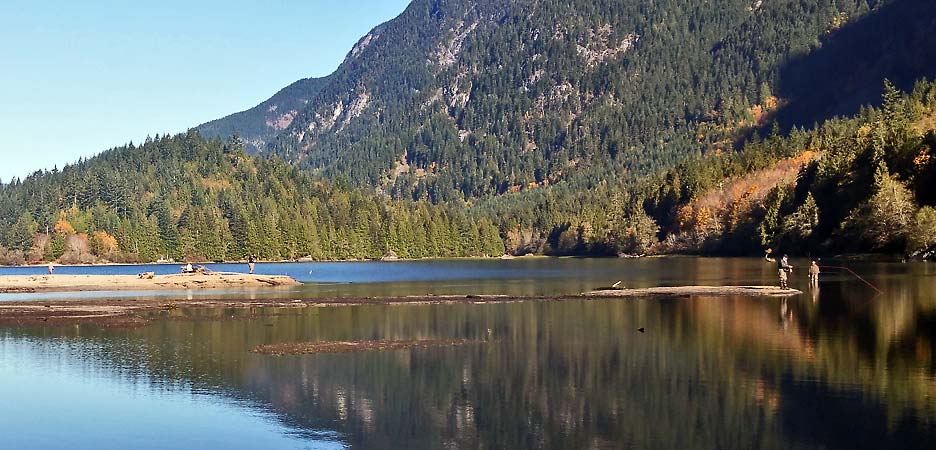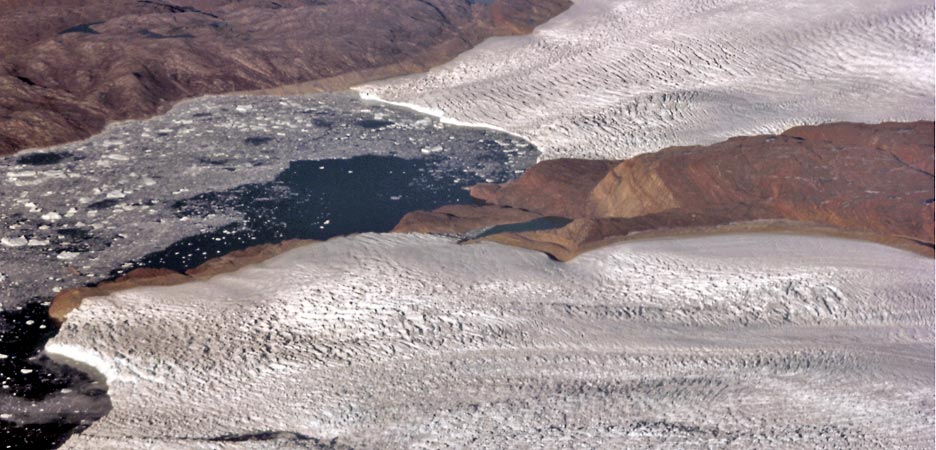Fly Fishing Fabisch, the Weekly Picture Archive 3 - 2016
Weekly pictures Archive 2016 three
Weekly pictures archive 2016 part three
.
Weekly picture archive at Fabisch Fly Fishing 2016 part three. Here once again collected pictures in 2016 three from the areas fly fishing, fly tying and nature. The pictures were taken in Europe as well as North America including Canada.
.
.
Moricetown on the Bulkley River
.

Weekly picture KW 36 2016
Visitors to British Columbia who make it as far as Smithers should by no means miss a little excursion to Moricetown. This place is only 35 km from Smithers and has been known for many years for the harvesting of salmon from the rapids by members of the First Nations using gaffs on extremely long poles. The gaffing is history now, instead, in extreme low water conditions, the locals manually help the salmon and steelhead across the rapids whenever the fish passes lack enough water to be passed by fish trying to run upstream.
The locals are always ready to answer travelers´ questions as to the number of fish, their diverse species and the water levels in different seasons. Travelers in RVs may use the very nice campground near the rapids. In case you´re not just passing through but going back to Smithers, you should go by the Telkwa High Road. You are very likely to meet black bears, and you can look down into the Bulkley Canyon. Be careful, though, because the cliffs above the canyon are brittle, and the hopes for survival for anyone falling down into the canyon are very limited.
.
The Rapids in Moricetown
.
.
Weekly picture KW 40 2016
Fall in British Columbia may yield great pictures. We rarely realize that this is due to a large part of plant life dying, which brings about these almost unreal colors. This photograph, taken about 150 km north of Prince George does not show the freezing temperatures we endured that night. It was this trip´s first real challenge for my fellow travelers in their RV, and certainly for myself in the car. Waking up in a car in the morning with -2° C feels like...
The fishing for grayling up there was spectacular this year, shape and color of the arctic grayling were very impressive. Seems like this has been it for this year, though. The Bulkley has been a complete failure for four of us this year, and the same goes for steelheading on Vancouver Island altogether. To me this has been the very first time without a single steelhead in two and a half weeks of fishing. We´ll see how this is going to go in the future.
.
Fall Colors in Northern BC
.
.
Weekly picture KW 42 2016
Of course not! Not counting my winter trips, 2016 has been the worst trip ever, as far as results are concerned. On trips lasting three to three and a half weeks, I have several times caught more than 40 steelhead. Considering this, you will understand that I´m quite disappointed to have caught a mere 4 steelhead during a four week stay in BC. Every time we moved from one river to the next we arrived on waters in good conditions which changed overnight to unmanageable.
The Stamp River for example presented itself in perfect condition upon our arrival, and we managed to catch several steelhead. At night, heavy rains kept falling for several hours, and that was it for fishing the Stamp in 2016. We were 6 anglers in our group, and some of us hit it even worse than I did. More information to follow in my Canada Report in due time. The fish on the picture below was the last steelhead I caught in 2016. Shortly before, I had caught a smaller one around 65 cm, making this an almost normal day.
.
Pretty Fish from the Coquihalla
.
.
Weekly picture KW 43 2016
or, to be correct, in Coquitlam, one of Vancouver´s suburbs. Having arrived two days ahead of my friends, I had enough time to get a few things done before they would get there. I got around to checking out the situation on the Coquihalla. I also had the time to pick up a box containing fly fishing equipment, some maps, and lots of useful odds and ends at a friend´s. The box holds roughly five cubic feet and thus usually allows me to fly with only one piece of luggage on my transcontinental flights.
Before picking up my friends upon arrival at the airport, I visited a wholesaler of fishing tackle and looked around for motifs to take a few photographs. The photograph above shows a sight I saw when crossing a long bridge on Lougheed Highway (Hwy # 7). The bridge also featured a pedestrian walkway. It took me about half an hour to find access to this walkway. When I started walking towards the middle of the bridge with all my photo equipment, I realized just how wide it really was. Anyway, in my opinion, it was well worth the effort.
.
Beautiful Motif Direction Northeast
.
.
Weekly picture KW 44 2016
You spend 11 months looking forward to getting back to Canada, and once you get there, all your dreams are shattered in no time flat. Those trips halfway around the globe have to be planned well in advance. Unfortunately, the weather is beyond planning, and that goes especially for Western Canada. We usually don´t mind a little cold or a little rain as long as we get to fish, but heavy rains can change the situation on our fisheries for weeks. On our first day, a Monday, we had good conditions, but one night of heavy rainfall changed it all.
The photograph shows the junction of the Telkwa into the Bulkley. The Telkwa comes in high and dirty and colors the Bulkley for miles downriver. We managed to fish the Bulkley above the junction for another day, then even that became impossible. Along the Upper Morice River, main tributary to the Bulkley, the precipitation fell as snow. The daytime temps being relatively high, it melted instantly and colored the Bulkley downriver from Houston. There was no fishing on the third day, and the fourth and fifth day saw us trying but brought no strikes. By the way, the Telkwa serves as a good indicator for the water situation on the Copper. Once the Telkwa is dirty, the same usually goes for the Copper, and you needn´t take off for the 200-km-drive to Terrace.
.
The Telkwa is not looking promising at all
.
.
Weekly picture KW 47 2016
As I mentioned before, we didn´t catch a lot of steelhead this year. We have had similar experiences on past trips, but then the disappointment was limited to one of several watersheds. The new experience was that the Bulkley, Vancouver Island, the Thompson, and the Coquihalla all yielded but a few fish. Things like that may happen when fishing winter runs from Mid-February to Mid-March, but they´ve been uncommon for us in fall.
Most fortunately, however, each angler in our group had at least one take in 2016 on Silver Lake near Hope. We even managed to land one steelhead. Silver Hope Creek above its mouth into Silver Lake is closed to all fishing from October 1st. Violations of this rule may cost dearly, up to Can$ 5,000. So, even if you spy a dozen steelhead in the first few pools upstream - keep your calm!
.
Four anglers on the Silver Lake
.
.
Weekly picture KW 50 2016
We had finished fishing the Thompson River and were driving down south towards Hope on Highway #1. Highway #1 runs alongside the Fraser River for over 100 km. About 25 km before you reach Hope you come to the very small (population 186) village of Yale. History in this area goes back to 7,500 B.C.. More recent history has it that Yale was a starting point for the Gold Rush up North.
Many creeks and rivers in British Columbia hold gold. In Yale e.g. there is a large public claim where anyone is welcome to test his luck, and it is practically impossible to find absolutely nothing. As I had two group members who were on their very first trip to B.C., I wanted to let them have a try on this public claim. As we were descending towards the river we spotted a person working very hard playing some big fish. As we came closer, we realzed that it was a young lady, and she wasn´t playing a king salmon as we had expected, but a white sturgeon measuring 2.37 m!
.
A Super Beauty - Sturgeon Measuring 2.37 m
.
.
Weekly picture KW 52 2016
People start getting fed up with the term "climate change". For years we have been told of many frightful scenarios, forecasts of global warming and what it is going to do to life on Earth. What is being done about it - nothing! A wind turbine here, a couple of solar cells there, but still 9° above zero at night during the Christmas holidays! Talking about solar cells: I guess I´ll have to sit down and figure out how many of those you need to melt a thousand tons of steel. The Costa Concordia e.g. weights 114,500 tons net, and would require quite a few hands to hold their matches to the melting pot.
We, the people, will probably not be able to stop the machinations blocking progress in sustainable energy production, not as long as there are still fortunes to be made in oil and coal, no matter what that does to world climate. What you can see on this photograph might be useful to show your great-grandchildren what snow and ice used to look like. It was taken on a flight across Greenland. You want to shoot one yourself? Don´t wait too long, because the big meltdown is even happening up there already! Well, Happy New Year everybody!
.
Will This Soon Be Just History?
.
.
Weekly picture main
The Weekly picture main page
.
Weekly picture archive 2014
.
Weekly picture archive 2015
2015 part one, - 2015 part two, - 2015 part three, - 2015 part four
.
Weekly picture archive 2016
2016 part one, - 2016 part two, - 2016 part three
.
Weekly picture archive 2017
2017 part one, - 2017 part two, - 2017 part three, - 2017 part four, - 2017 part five
.
Weekly picture archive 2018
2018 part one, - 2018 part two, - 2018 part three, - 2018 part four, - 2018 part five
.
Weekly picture archive 2019
2019 part one, - 2019 part two, - 2019 part three, - 2019 part four
.
Weekly picture archive 2020
2020 part one, - 2020 part two
.
Weekly picture archive 2021
.
Wolfgang Fabisch, Nürnberger Str. 45, 90542 Eckental/Germany
✆ DE 011 49 9126 288640, Fax 011 49 9126 288643, Ⓒ Wolfgang Fabisch






